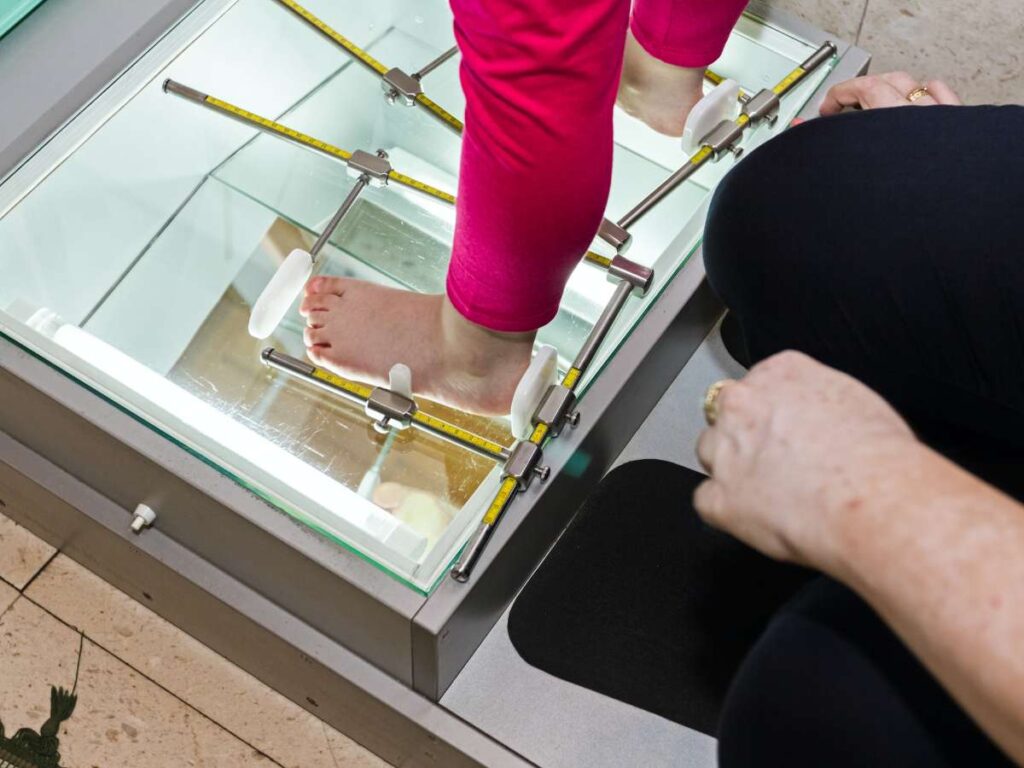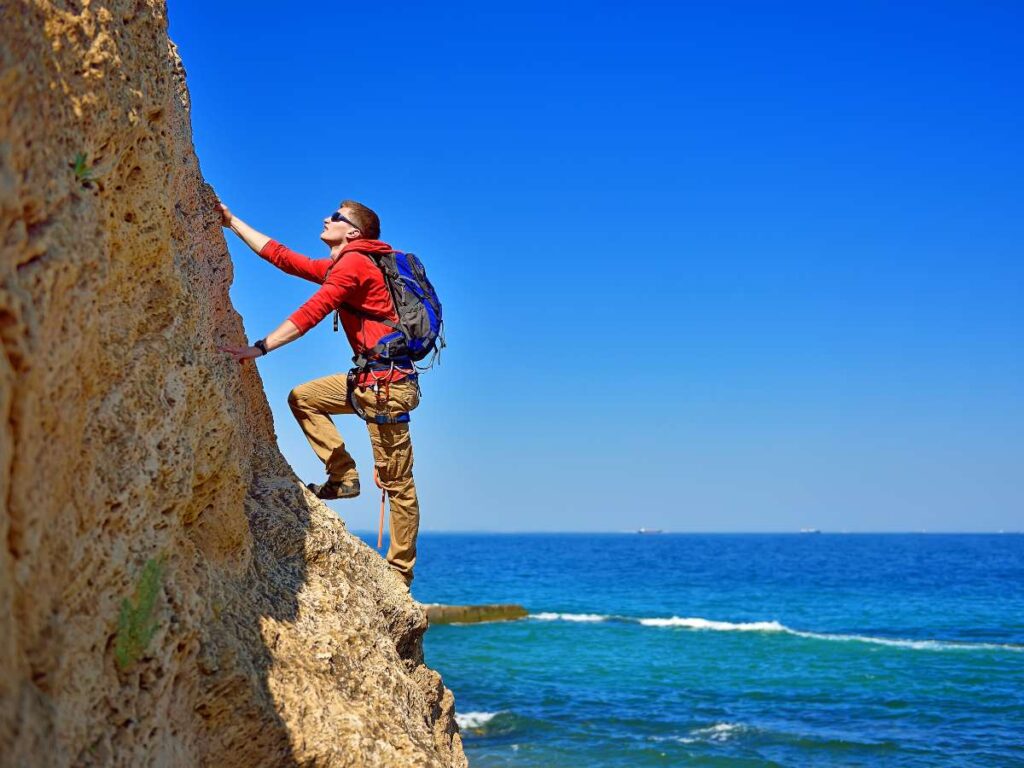Why Choose Custom Rock Climbing Shoes?

Author: Andy Hong | Founder at XDS
Hi, I'm Andy Hong, here to share my expertise in footwear manufacturing with you.
Why Choose Custom Rock Climbing Shoes?
Table of Contents
Why should climbers consider custom rock climbing shoes? The answer lies in their ability to enhance performance by offering a tailored fit and optimized features for specific climbing styles and terrains.
As a climbing gear consultant, I often encounter questions about whether custom climbing shoes are worth the investment, especially for those seeking improved precision and comfort during challenging ascents.
To answer these questions thoroughly, I spent hours researching the benefits of custom climbing shoes. My findings reveal that the right custom shoe can be a game-changer for climbers at all skill levels.
In this guide, we will dive into the advantages of custom rock climbing shoes, explore customization, and discuss where to find reliable makers. By the end, you will understand why these shoes are a valuable asset for serious climbers.
So, let’s dive in!
1. Benefits of Choosing Custom Rock Climbing Shoes
Custom rock climbing shoes provide unique advantages that elevate performance, comfort, and durability. By addressing specific needs, custom shoes create a climbing experience that exceeds what off-the-shelf options can offer:
Enhanced Fit for Improved Performance
Custom climbing shoes conform closely to the shape of each foot, offering an unmatched fit. This precision enhances control during technical maneuvers, allowing climbers to perform with greater confidence. Eliminating pinching or excess space reduces discomfort during long climbs. A proper fit also minimizes fatigue, enabling focus on the climb itself.
Greater Comfort for Extended Climbs
The tailored design of custom shoes reduces the need for lengthy break-in periods, providing comfort right from the start. Climbers experience fewer issues like hotspots or irritation, even during extended use. This comfort ensures reliability throughout multi-pitch climbs or long gym sessions. Custom features like added padding or softer linings further enhance ease during challenging routes.
Improved Sensitivity and Support
Custom shoes balance sensitivity and support, catering to different climbing demands. Sensitivity helps climbers make precise foot placements, while support provides stability on tough terrain. Design elements like aggressive downturns or flatter profiles can be incorporated to suit specific climbing styles. This combination improves confidence and efficiency on both rock surfaces and indoor walls.
Durability and Longevity
Custom climbing shoes often use premium materials tailored to the climber’s environment and preferences. A precise fit reduces strain on critical areas, extending the life of the shoe. Features like reinforced toe boxes and durable rubber soles enhance durability for demanding climbs. Although the initial investment is higher, the extended lifespan makes custom shoes a cost-effective choice over time.
2. Material Selection for Custom Climbing Shoes
The materials used in custom climbing shoes play a vital role in their performance, comfort, and durability. Each component is carefully chosen to match the climber’s specific needs and preferences, ensuring the shoe delivers optimal functionality for various climbing scenarios:
- Uppers: The upper material determines how well the shoe conforms to the foot and affects its breathability and flexibility. Leather is a popular choice due to its ability to stretch and mold to the foot over time, while synthetic materials retain their shape and provide durability for high-performance climbing.
- Soles: The sole material directly influences the shoe’s grip on various surfaces and its resistance to wear. Rubber compounds like Vibram XS Edge and Stealth C4 are commonly used for their excellent friction and resilience, ensuring stability and performance during demanding climbs.
- Linings: Linings are essential for enhancing comfort by managing moisture and reducing friction between the foot and the shoe. Some climbers prefer lined shoes for added structure and comfort, while others opt for unlined designs to maximize breathability and flexibility.
- Closure Systems: The choice of closure system affects how securely the shoe fits and the ease of adjustment during climbs. Options like lace-ups allow for precise tension adjustments, Velcro straps offer quick and convenient fastening, and slip-ons prioritize simplicity for fast transitions between climbs.
- Toe Caps: The material used in toe caps determines the shoe’s ability to withstand wear and protect the climber’s toes. Reinforced rubber toe caps provide durability for toe-hooking and protect against abrasion during frequent use on rough surfaces.
- Heel Design: The material and structure of the heel influence how well the shoe stays in place during dynamic movements. High-tension rubber heels ensure a snug fit and improve heel-hooking capabilities, especially on overhanging routes.

3. 3 Factors to Consider in Customization
Customization of rock climbing shoes requires careful consideration of various factors. These factors ensure that the final product meets the climber’s unique needs, aligning with their climbing style, preferences, and the challenges posed by different terrains:
Foot Shape and Measurement Precision
Accurate measurements of foot length, width, and arch height are critical for achieving a perfectly fitting climbing shoe. Utilizing advanced techniques like 3D scanning or foot molds allows for highly precise customization, a feature exemplified in XDS’ shoes, which are designed to deliver exceptional fit and comfort.

Climbing Style and Activity Focus
The intended climbing style plays a critical role in determining the shoe’s design features. Aggressive downturns and asymmetry are ideal for bouldering and sport climbing, where precise footwork is essential, while flatter profiles are better suited for trad climbing or long multi-pitch routes. By tailoring features to specific activities, custom shoes enhance the climber’s confidence and efficiency on various surfaces.

Balance Between Sensitivity and Support
Finding the right balance between sensitivity and support is crucial when designing custom climbing shoes. For instance, sensitivity is essential for precise foot placements and allows climbers to feel subtle changes in the terrain, which is particularly useful for technical routes. On the other hand, adequate support ensures stability and reduces fatigue during prolonged climbs or when tackling challenging footholds.

4. Where to Get Custom Rock Climbing Shoes
Finding the right provider for custom rock climbing shoes is essential to ensure the final product meets expectations for fit, performance, and durability:
- Specialized Brands Offering Customization: Established brands combine expertise with proven designs, making them a reliable choice for climbers seeking a balance of customization and quality.
- Independent Cobblers for Full Customization: By working closely with climbers, these artisans create personalized designs that cater to specific foot shapes and climbing styles, ensuring a perfect fit.
- Local Climbing Shops with Custom Services: Many local climbing stores provide valuable insights into regional climbing conditions and styles, enhancing the customization process.
- Online Platforms Offering Custom Design Tools: Several online platforms enable climbers to design their custom shoes from the comfort of their homes using detailed guides and virtual tools. A reputable platform with strong customer support is essential to avoid errors in measurements or design specifications.
5. Comparing Custom Shoes to Off-the-Shelf Options
When deciding between custom rock climbing shoes and off-the-shelf options, it is important to understand the differences in fit, performance, durability, cost, and availability. The table below provides a detailed comparison to help climbers make an informed decision:
| Aspect | Custom Shoes | Off-the-Shelf Shoes |
| Fit and Comfort | Tailored to the exact shape of the climber’s feet, eliminating pressure points and ensuring maximum comfort. | Designed for average foot shapes, which may not suit everyone and often require a break-in period. |
| Performance | Optimized for specific climbing styles and terrains, offering better precision and control. | Generalized design caters to a wide audience, potentially sacrificing features for specialized needs. |
| Durability | High-quality materials and a precise fit reduce stress points, resulting in longer-lasting shoes. | Good durability for standard use but may wear out faster due to less precise fit and generic construction. |
| Cost | Higher upfront cost due to customization and craftsmanship, but often a worthwhile investment. | More affordable and widely available, making them a practical choice for beginners or casual climbers. |
| Availability | Requires time for production, often taking weeks or months to complete. | Readily available in stores and online, allowing immediate purchase without waiting periods. |
6. Common Mistakes to Avoid When Choosing Custom Shoes
Choosing custom climbing shoes requires careful attention to detail, as mistakes during the process can lead to a suboptimal fit, reduced performance, and unnecessary costs. By avoiding common pitfalls, climbers can ensure their custom shoes meet their expectations and deliver the desired benefits:
Inaccurate Measurements
Measuring foot length, width, and arch height accurately is crucial to achieving a fit that eliminates pressure points and discomfort. Advanced tools like 3D scanning or professional fitting services can help capture precise details. Rushing the measurement process or relying on guesswork can compromise the entire customization effort, leading to dissatisfaction with the final product.
Overlooking Climbing Style Requirements
Another common mistake is neglecting to align the shoe design with the climber’s primary climbing activities. Features such as sole thickness, downturn aggressiveness, and rubber type should match the demands of bouldering, sport climbing, or trad climbing. Choosing the wrong features can reduce performance, particularly on technical routes or prolonged climbs.
Choosing Inexperienced Makers or Services
Opting for an unqualified custom shoe maker or unreliable service can result in subpar craftsmanship and materials. Researching reviews, checking portfolios, and seeking recommendations are essential steps in finding reputable providers. Experienced makers are more likely to understand the nuances of climbing shoes and deliver a product that meets expectations.
7. 4 Tips for Finding the Right Custom Shoe Maker
Selecting the right custom shoe maker for climbing shoes is essential to achieving the best fit, performance, and durability. Evaluating technical expertise ensures the final product meets the demands of climbing styles and terrains:
#1 Utilizes 3D Scanning or Digital Imaging
Advanced measurement tools such as 3D scanning or digital imaging provide highly accurate foot dimensions, capturing details like arch height and heel tension. These technologies eliminate common fitting issues and ensure precise alignment with the climber’s movements. Incorporating modern tools into the process enhances the overall fit and performance of custom climbing shoes.
#2 Integrates High-Tension Heel Rubber
Mathe shoe maker integrates advanced features like high-tension heel rubber for secure fits and improved heel-hooking capabilities. This feature is particularly important for bouldering and overhanging routes where precision is critical. Proper heel tension enhances stability and prevents slippage during dynamic movements. A technical focus on heel design ensures a secure and efficient climbing experience.
#3 Uses Reinforced Toe Caps
A skilled maker will offer reinforced toe caps, essential for durability and toe-hooking in challenging terrains. This feature protects the shoe against abrasion and extends its lifespan during frequent use on rough surfaces. XDS’ shoes incorporate reinforced components to meet the durability and performance requirements of serious climbers.
#4 Customized Midsole Stiffness
The option to customize midsole stiffness ensures a balance between support and sensitivity tailored to climbing styles. For instance, a stiffer midsole is ideal for edging on small footholds, while softer midsoles enhance sensitivity for smearing on slabs. This feature allows climbers to optimize their shoes for specific terrains, improving precision and comfort.
Conclusion
Custom rock climbing shoes provide tailored solutions to enhance performance, comfort, and durability for climbers of all skill levels. By addressing specific needs such as unique foot shapes, climbing styles, and terrain demands, these shoes outperform standard options in precision and longevity. Understanding the benefits, customization factors, and trusted providers can help climbers make informed decisions for their equipment.
We hope this guide provides valuable insights into the advantages of custom climbing shoes and how they can elevate the climbing experience. XDS can replicate and deliver the quality, innovation, upper fabrics, and sole materials of top brands, offering product solutions of the same caliber. Contact us today to discuss your climbing shoe needs and discover how XDS can support your business goals.
Explore More Helpful Resources
There’s more to explore! Check out our additional product selections to find exactly what you’re looking for:
Still haven’t found what you’re looking for? Don’t hesitate to contact us; we’re available around the clock to assist you.
Quick Quote
Fill out the form, get the quote in hours!





